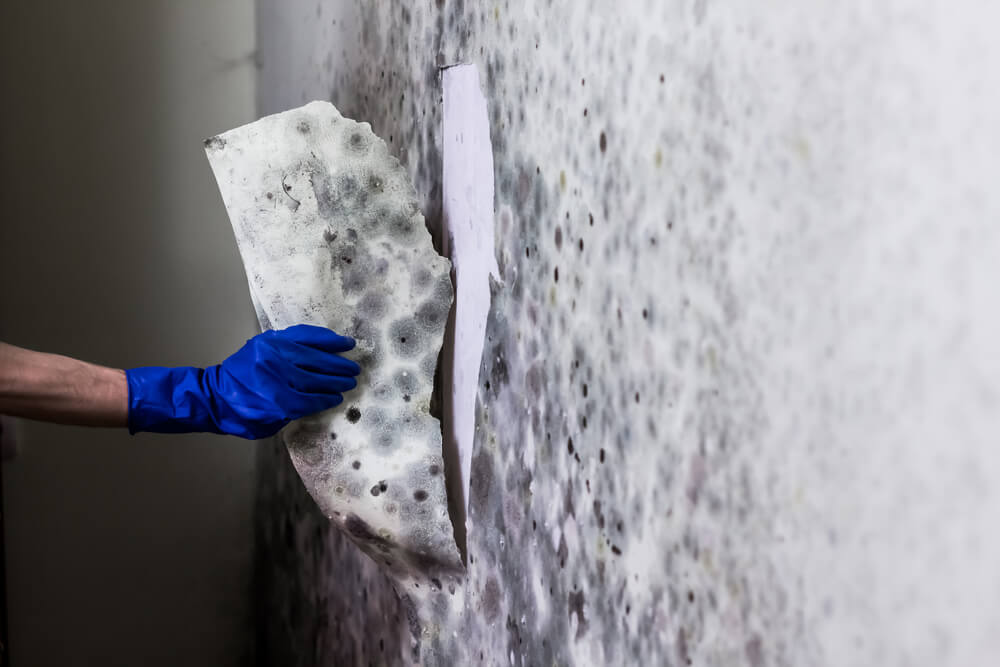Crafting a Detailed Post Mold Remediation Report
Crafting a Detailed Post Mold Remediation Report
Blog Article
Specialist Tips for Article Mold Remediation Success
In the realm of mold and mildew removal, efficiently eradicating mold is just half the fight; the real difficulty exists in stopping its reappearance. By adhering to experienced pointers and finest methods, individuals can guard their spaces versus mold renewal and maintain a healthy interior setting.
Display Moisture Levels On A Regular Basis
After completing mold remediation procedures, preserving optimal humidity degrees is important to prevent mold re-growth and make sure a healthy and balanced indoor atmosphere. High moisture levels above 60% create a conducive environment for mold and mildew to flourish, making normal monitoring a proactive action to prevent any type of future mold and mildew concerns.
Furthermore, establishing a regular schedule for moisture checks, specifically in high-risk locations such as kitchens, cellars, and restrooms, is a proactive approach to mold and mildew prevention. By constantly checking humidity degrees, home owners can successfully mitigate the danger of mold and mildew reoccurrence and maintain a healthy and balanced indoor setting post-remediation.
Conduct Thorough Inspections Post-Remediation
Complying with the completion of mold remediation treatments, it is vital to conduct extensive inspections to confirm the performance of the remediation procedure. These post-remediation assessments are essential in making sure that the mold and mildew problem has been effectively resolved and that there is no recurrence or staying mold and mildew development. Assessments should be executed by qualified specialists who have knowledge in identifying mold and mildew and analyzing indoor air high quality.
Throughout these evaluations, different techniques such as aesthetic analyses, air sampling, and surface tasting might be employed to thoroughly review the remediated locations. Visual evaluations include an in-depth inspection of the premises to look for any kind of noticeable indicators of mold and mildew development or water damages. Air tasting aids in identifying the air-borne mold spore degrees, while surface area sampling can discover mold and mildew fragments on surfaces.
Implement Proper Air Flow Methods
After making sure the effectiveness of the mold and mildew remediation procedure through detailed examinations, the next essential action is to focus on applying proper ventilation techniques. Adequate ventilation is essential in stopping mold and mildew reoccurrence by managing dampness levels and advertising air flow.
Correct ventilation not only help in avoiding mold and mildew development however likewise adds to the total wellness and convenience of passengers. By guaranteeing ample ventilation throughout the home, you can lower the threat of mold regrowth and develop a healthier living atmosphere. Routine upkeep of ventilation systems, including cleaning and filter replacements, is crucial to sustaining effective ventilation. Consulting with cooling and heating professionals can offer additional insights right into optimizing air flow strategies for your details home requirements.

Use Mold-Resistant Materials for Services
To improve the lasting performance of mold and mildew remediation initiatives, including mold-resistant materials for repair work is essential in mitigating the risk of future mold and mildew growth. Mold-resistant products are developed to stand up to wetness and hinder mold development, making them a crucial option for areas susceptible to dampness and humidity. When repairing locations impacted by mold, making use of materials such as mold-resistant drywall, mold-resistant paints, and mold-resistant caulking can aid avoid mold reappearance.
Mold-resistant drywall is an exceptional choice to traditional mold removal car drywall in areas like basements and shower rooms where dampness levels are higher. When subjected to damp problems, this type of drywall has an unique finishing that withstands mold growth even. Additionally, using mold-resistant paints including antimicrobial agents can additionally inhibit mold and mildew development on ceilings and walls.
In areas where wetness is common, such as bathrooms and kitchens, utilizing mold-resistant caulking around sinks, home windows, and bathtubs can assist seal out water and avoid mold from taking hold in splits and holes. By buying these mold-resistant materials during repair services post-remediation, you can dramatically minimize the possibility of future mold problems and keep a much healthier indoor environment.
Maintain Cleanliness and Address Water Issues
After mold and mildew removal, it is crucial to maintain a clean atmosphere to protect against the regrowth of mold. Leaks, water breach, or high humidity degrees can develop the ideal reproduction ground for mold and mildew, so it is important to deal with any water-related issues quickly.
To maintain tidiness, take into consideration using HEPA filters in vacuums and air cleansers to catch mold and mildew spores and prevent their circulation in the air. Moreover, making sure proper air flow in locations vulnerable to moisture build-up, such as cooking areas and washrooms, can aid keep moisture degrees in check. By remaining watchful about sanitation and addressing water issues quickly, you can efficiently protect against mold reinfestation and keep a healthy and balanced interior atmosphere.
Verdict

In the world of mold remediation, successfully eradicating mold is only half the battle; the true obstacle exists in stopping its reappearance. After finishing mold and mildew remediation procedures, preserving ideal moisture levels is essential to stop mold and mildew re-growth and make certain a healthy and balanced indoor environment. discover here High humidity levels above 60% produce a helpful setting for mold to flourish, making normal monitoring a proactive measure to prevent any type of future mold issues.
To enhance the long-term efficiency of mold remediation efforts, incorporating mold-resistant materials for fixings is essential in alleviating the danger of future mold growth. After mold removal, it is critical to maintain a tidy setting to stop the regrowth of mold.
Report this page